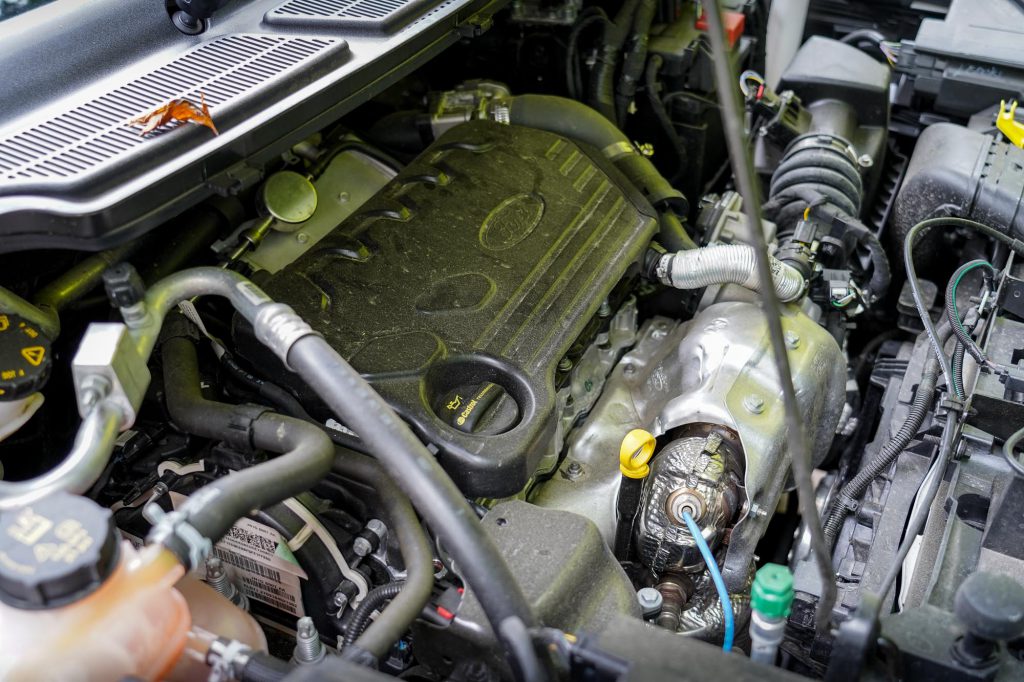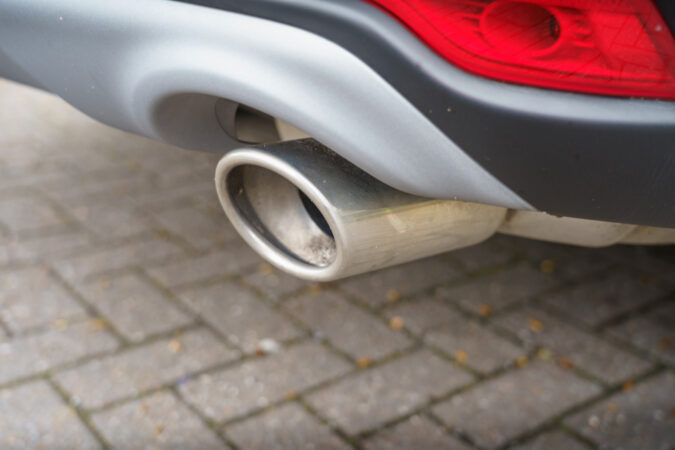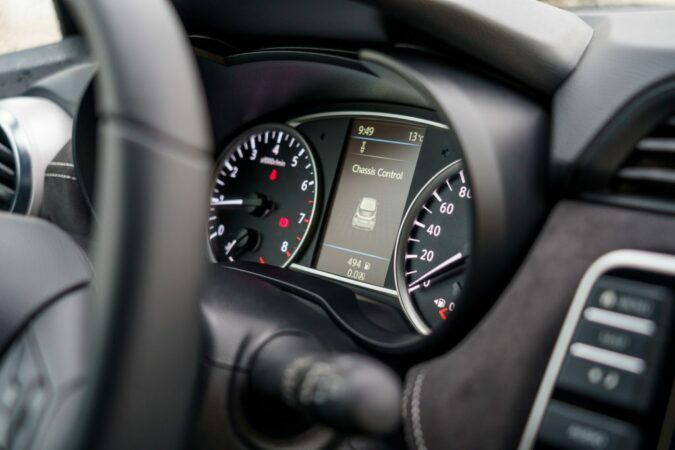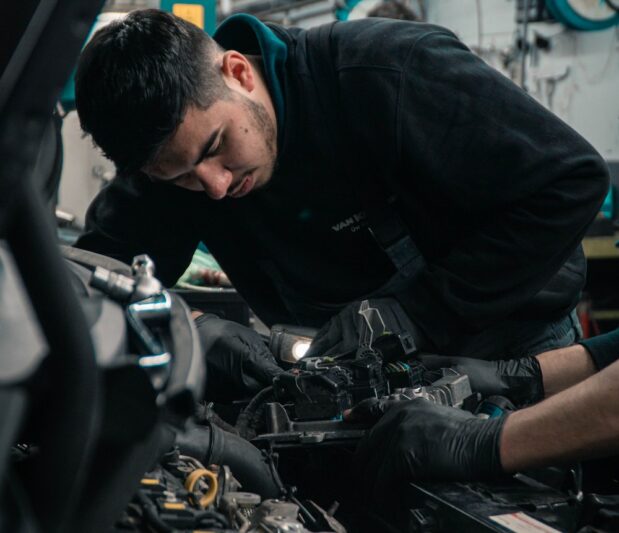Nowadays, almost every vehicle comes with efficiency kept in mind. We want every car to operate in a way that is the most efficient so that it is also able to make the most out of every one of the combustion cycles. We can do this with the help of something known as the ECM. Have you ever encountered an error code that says “P0131” in your car? Here is what you need to know about the code and how to deal with it!
An ECM is a computer dedicated to your vehicle’s engine, and it is responsible for monitoring all of the data related to the engine. This computer relies on feedback from different sensors. It does that when it needs to determine the right positioning for the throttle plates or the appropriate fuel trims.
All of the calibrated sensors can display several operating values. These values also include the ones that correlate with oxygen densities in post-combustion.
Even though sensors like this tend to be quite robust, they still occasionally suffer from a few issues. You will usually notice a diagnostic error code when something like this happens. It will also light up your check engine light.
One of these diagnostic trouble codes, also known as DTC, is P0131. This sensor generally accompanies irregular feedback from the oxygen sensor. If you want to learn more about the DTC P0131 and how to solve this problem if you get, then we suggest that you keep on reading!
P0131 Code
The DTC P0131 is a low sensor voltage for the oxygen sensor bank 1 sensor 1 or even the foul air to fuel ratio. It indicates the relative loss of the rational feedback from the number 1 O2 sensor of the vehicle, concerning the engine bank number 1. You will also find that it is often known as the fuel/air sensor of the vehicle.
The ECM/PCM of your vehicle will use the data collected from this sensor. It will determine the proper fuel/air ratio so that the operation is more efficient. It means that having the presence of DTC P0131 avoids the fault of the number 1 oxygen sensor in bank 1.
The affected vehicle’s ECM/ECU/PCM has likely received feedback from the sensor. It’s either plain irrational or way outside the broad operating range. As you can tell, the operating logic would cause the management software of the engine to reject data like that.
The engine then starts to operate in a failsafe mode to overcome any limitations posed by this. It substitutes the preprogrammed data that could be suspect.
Due to all of these parameters, the engine can still function, although it does function less optimally. In most cases, you will notice a loss in fuel efficiency.
Notes
- You need to remember some things to understand the diagnostic trouble code P0131 properly.
- Sensor 1 refers to the sensor located in the exhaust system right before the catalytic converter.
- Bank 1 is the left side of the engine.
Symptoms Of DTC P0131
Several other symptoms come with it when experiencing the error code P0131. Keep in mind that all these symptoms can differ from case to case, meaning that it might be different for everyone who has this DTC code.
The symptoms listed below are some of the most common ones related to the P0131 diagnostic trouble code.
- Difficulties in starting the vehicle
- The poor economy of fuel
- Irregular and sporadic stalling
- Stuttering or hesitation when accelerating
- Erratic or rough idling
- Check engine light is blinking or stays on
When the circuit of the oxygen sensor detects a fault, it lights up the Check Engine light. You can see it blinking or just lit up on the dashboard. When the Check Engine light is visible, the vehicle’s ECU puts the whole car in a failsafe mode.
It also sets the ratio of the air to fuel to a fixed condition. Eventually, it makes sure that the vehicle is lean to prevent damage to the catalytic converter. The car will most likely have a poor fuel economy when in lean conditions.
When you are driving with an issue with the oxygen sensor, the vehicle might start to stutter or even run poorly. In the most extreme cases, the vehicle’s engine just died when running with this code being present.
What Causes The Error Code P0131
Many potential issues can cause your vehicle to get the P0131 diagnostic trouble code.
These problems or issues mainly affect either one or even more of a vehicle’s connected circuits or O2 sensors.
The list below has a few of the most common causes of the DTC P0131.
- Issues with the ECM
- PCM might need reprogramming
- Missing or blown PCM O2 sensor reference voltage circuit fuse
- Lean air-fuel mixture
- Leaks in the exhaust/intake
- O2 sensor being faulty
- O2 connector or sensor being damaged or loose
- The O2 sensor circuit is shorted or open
- The temperature sensor for the engine coolant is defective
Another prevalent but apparent reason that you can look into is whether or not the sensor has just stopped functioning properly. It can happen due to age and wear. Even though it is scarce for it to occur, something else that could happen is that the PCM might also be faulty.
Also, keep in mind that a lean air-fuel mixture is primarily due to a few specific reasons, so it would be better for you to look out for them. Some of those reasons are listed below:
- Leaks in the vacuum
- Purge valve having a leak
- EGR valve being stuck open
- PCV valve has gone bad
- Low pressure from the fuel
- Airflow sensor getting dirty
Other reasons could cause a lean air-fuel mixture. But, the ones we have listed above are the most common ones you are most likely to come across.
Imagine there is a lean air-fuel mixture. In such cases, your vehicle’s engine is also more likely to lack power. It’ll also run through at idle. When this happens, you might also come across other codes, such as P0174 or even P0171. You should also keep an eye out if you come across these codes.
Is The DTC P0131 Serious?
Generally, the diagnostic trouble code P0131 is pretty severe. It’s mainly because the DTC P0131 can ultimately cause your vehicle to stall. It includes many other quite severe issues with the drivability of your vehicle.
Should it mean that if this issue goes unaddressed, then there are chances that the driver is just going to be left stranded. It could even happen in the middle of heavy traffic.
Whatever the case may be, DTC P0131 is something to be taken seriously. Not only that, but you should also take care of it and get this addressed as soon as you possibly can.
Typically, you might not be comfortable diagnosing and repairing such an issue yourself. In that case, you can always make an appointment with a service center of your choice that you can trust. Make sure you do this at the first opportunity available to you.
How Do You Fix P0131?
When trying to diagnose and remedy the leading cause of the diagnostic trouble code P0131 of the vehicle, you can use the following steps.
However, you need to ensure that you are consulting the correct factory-specific service book. And you need to do it for your particular vehicle before you start to take over any such repairs.
1. Check If There Are Other Codes Present There As Well
Before you start to do any of the diagnostic processes, you must check if any other trouble codes are present there. If there are any active diagnostic trouble codes, you need to ensure that you take care of those before starting on the DTC P0131.
2. Perform A Quick Visual Inspection
Once you have made sure that there are no additional DTC codes present other than the P0131, you can continue to do a visual inspection. You are required to very carefully inspect the O2 sensor that has been affected so that you can spot if there are any signs of damage.
Additionally, you will need to thoroughly inspect all of the wirings and the circuit wirings related to this specific sensor. Damage done to the number 1 O2 sensor would call for a warrant for immediate replacement.
According to the industry standards, all of the decay in the wirings also needs to be remedied.
3. Check The Data Of The Freeze Frame
Make sure to do a thorough visual inspection. If you still can’t find any damage to the circuit or the sensor, you will need to analyze the data. You can find this data from the freeze-frame connected to the diagnostic trouble code.
With this data, you will be able to outline the conditions. The diagnostic trouble code P0131 should match those specific conditions.
4. Replicate Conditions Or Clear DTC
You will now be clearing up the DTC P0131 by using a scan tool that is of good quality. Once you have cleared up this code, you need to do a thorough and proper test drive.
When doing this test drive, you must try to replicate the conditions captured in the data. This data is from the freeze-frame that we reviewed in the 3rd step.
While replicating all these conditions to the best of your capabilities, you need to run a check to look for the trouble code P0131.
5. Verify Signal From The Sensor
Suppose you could confirm that an active DTC P0131 was stored when performing the 4th step. In that case, you need to verify the voltage. Also, see the resistance of the number 1 O2 sensor from Bank 1 and make sure that they are within the specification.
If you are unsure of your findings, you can always refer to the owner’s manual. You need to be careful to be logging in any outliers from within this chain of data.
6. Check The Values From The Coolant Temperature Sensor
There have been cases that show that the trouble code P0131 happens due to a faulty coolant temperature sensor. It is important to verify and go through the lessons of all the coolant temperature sensors. Make sure that they are within the specification compared to the values stated by the factory.
7. If The O2 Sensor Is Faulty, Replace It
When you are at this point in diagnosing, you need to replace the O2 sensor of the vehicle. Of course, only if you are getting feedback from the sensor that looks like it is irrational. You need to set all of the data from the coolant temperature sensors and make sure that they are all within specifications.
8. If Necessary, Replace The ECM/PCM
First, run the testing properly. Suppose you see that the data from the coolant temperature sensor and the O2 sensor of the engine were within the given specifications. In that case, you can easily conclude that there are issues with the ECM/PCM in your vehicle.
If you see that all of the other values match the ones that the manufacturer specifies, then it is warranted that you need an ECM/PCM replacement. Refer to the service book that is factory specific for your particular vehicle if you are still in doubt.
How Exactly Does A Mechanic Check For The DTC P0131?
What’s the first thing a mechanic would usually do when diagnosing the error code P0131? They will take an OBD2 scanner and plug it into the DLC connector. It can generally be on the driver’s side, under the dash. They do this so that they can read and confirm any of the codes that are present.
Every code will have an associated freeze frame. It will show us the set code conditions. Such as the run time, the driving speed, engine speed, and engine temperature. It will allow the mechanic to recreate the requirements during the test driving process.
Once they have confirmed an error code P0131 present, a qualified mechanic will clear the code. Then take the vehicle out on a test drive. Now, you can observe the data stream of the car. It shows the resistance and the voltage of the oxygen sensor.
Suppose the code were to come back on, and the technician notices an out-of-range voltage present or some excessive resistance. In that case, they can confirm that there is something wrong with the oxygen circuit sensor of your vehicle.
The mechanic will perform a visual inspection when they notice something like this. They will inspect and check the integrity of the wiring of the oxygen sensor.
If checking the wiring does nothing, and everything seems to be okay, then the mechanic will check the voltage and resistance of the sensor. The resistance should always be below the specifications of the manufacturers. And the voltage needs to be below 1 volt for each of the vehicles.
How Much Would You Have to Spend for Fixing P0131?
As we have discussed, P0131 can happen by various issues. The major ones include exhaust leaks, poor wiring, and defective O2 sensor. So, it’s not possible to estimate the cost without knowing the correct reason. The cost to fix the trouble code will vary. It’ll depend on the cause, and the cost will be different depending on it.
When you take your car to a repair shop, they’ll first try to diagnose. The mechanic will try to find out the reason behind the trouble code. For this diagnosis, they can charge $70 to $140. It depends on the repair shop’s rate. Wait till they find the proper reason behind the code. Once they do it, you’ll know how much it will cost to fix.
Oxygen Sensor Repairing
If the trouble code showed up because of a faulty oxygen sensor, it’ll cost $220-$350 to fix it.
Exhaust Issues
If the issue is with the exhaust, then proper welding will fix it. Depending on the welding job, it can cost $120-$220.
Issues With Fuel Pump
It’ll cost you a bit more if the issue is with the fuel pump. The total fixing cost could rise to $1500-$1800 depending on the problem.
Pressure Regulator
You’ll be able to fix the trouble code with $200-$450 if the issue is with the pressure regulator. It can cost less if the problem is less severe.
Leaks
It’s a common issue to face that causes P0131 trouble codes. The leak is usually in the vacuum which you can easily fix at a repair shop. It’ll cost you $80-$180 to fix it.
Some Common Mistakes To Avoid When Diagnosing P0131
People tend to make some very common mistakes when diagnosing code P0131. We have a few listed below so that you can avoid them.
- The most common mistake is not confirming if there is a fault with the circuit of the oxygen sensor. You have to clear up the error code and perform a test drive.
- Many people tend to ignore the engine misfiring. It often happens due to the failure of an oxygen sensor. Moreover, misfires of the engine can also cause improper readings from the oxygen sensors in the vehicle.
- Most people do not realize that misdiagnoses can often happen by a coolant temperature sensor that has gone faulty.
Facts about the P0131 Code and Oxygen Sensor Circuit:
- The P0131 code indicates a low voltage signal or improper air-fuel ratio from the oxygen sensor in bank 1 sensor 1 location.
- Bank 1 refers to the left side of the engine, while sensor 1 refers to the sensor located before the catalytic converter in the exhaust system.
- The P0131 code can be caused by various issues such as failed oxygen sensor, damaged or unplugged wiring, and improper reading of coolant temp sensor.
- Symptoms of the P0131 code include the Check Engine Light illuminating, poor fuel economy, and the engine running poorly or stuttering.
- A qualified mechanic will diagnose the P0131 code by using an OBD2 scanner and observing the vehicle’s datastream to check for excessive resistance or out of range voltage.
- Common mistakes when diagnosing the P0131 code include not confirming the fault is present in the oxygen sensor circuit, misdiagnosing engine misfires as oxygen sensor failure, and ignoring faulty coolant temp sensors.
- The P0131 code is a serious problem that can cause the vehicle to run poorly and die while running.
- Repairs for the P0131 code include confirming the fault code, performing a visual inspection of the wiring, checking voltage and resistance, and replacing the oxygen sensor if necessary.
- Oxygen sensors are made to last the lifetime of the vehicle, but it is not uncommon to have oxygen sensor issues as the vehicle ages and exceeds 100,000 miles.
- Prompt attention should be given to the P0131 code due to its potential for engine damage, poor fuel economy, and drivability issues.
Frequently Asked Questions (FAQs)
Here are some of the most commonly and frequently asked questions about the DTC P0131.
How Do I Fix Code P0131
Suppose you want to fix the error code P0131 in your vehicle. In that case, you should either contact a professional and trusted car mechanic first. Or, if you are comfortable diagnosing and repairing the problem yourself, you can do that. Just follow the steps mentioned above carefully, and you should be fine.
What Does Code P0131 Mean
As mentioned above, The DTC P0131 is low sensor voltage for the oxygen sensor bank 1 sensor 1 or even for the improper air to fuel ratio. It mainly points out if there is a problem with your vehicle’s oxygen sensor. The one located in the bank 1 sensor 1 area of your car.
What Does An O2 Sensor Do
In simple terms, the main job of the O2 sensor in your vehicle is to regulate the air to fuel ratio of the engine in your vehicle. Each of the explosions in the combustion chambers of your vehicle happens due to the ignition of fuel and air. When there is an optimal air ratio in those chambers, your car can idle and run fine.
Which O2 Sensor is Bank 1
The simplest answer to this would be the first sensor that you can find closest to your vehicle’s engine is the Bank 1 Sensor 1. What Bank 1 means is that it is one side of the engine with the cylinders 1, 3, 5, 7, and more.
Is Bank 1 Sensor 1 Left Or Right
Bank 1 Sensor 1 is generally on the right side of the engine. The rear one is towards the firewall, and the sensors are labeled RH, so it must be on the right.
What Vehicles Is Code P0131 Most Common In
Many people have been trying to know about the P0131 Ford, P0131 Chevy, and P0131 Honda. So, these should be the most common ones. There also have been questions about specific vehicles such as the P0131 Ford F150, and the P0131 Chevy Silverado.
Final Words
The diagnostic trouble code P0131 can be pretty serious if you do not deal with it immediately. Although clearing it up might be a bit lengthy, you must do so if you want to keep on driving safely.
We hope this helped you know everything you needed to know about this specific DTC and quickly repair your vehicle!




